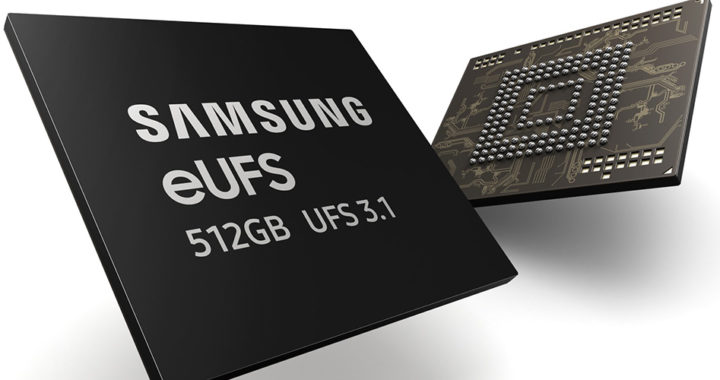A Universal Flash Storage or UFS is a flash storage specification and a high-performance solid-state storage interface based on NAND flash and developed for portable devices such as digital cameras, smartphones and tablet computers, and digital media players.
The establishment of the Universal Flash Storage Association in 2010 started the promotion of UFS as a replacement for other flash storage formats and standards such as the Multimedia Card and Embedded Multimedia Card. It was in 2014 when it began replacing eMMC as an internal storage solution for portable consumer electronic devices.
Samsung unveiled an embedded Universal Flash Storage based on UFS 3.0 during the 2018 Mobile World Congress. JEDEC Solid State Technology Association introduced UFS 3.1 in 2020 as a faster, more efficient, and inexpensive internal storage solution.
Pros of UFS: Advantages of Universal Flash Storage and Notable Applications
1. Introduces a Universal Flash Storage Standard
Standardization is one of the primary reasons for developing and introducing the Universal Flash Storage. It was positioned as a replacement for earlier embedded internal storage formats like Secure Digital or SD cards and Embedded Multimedia Cards or eMMC. These developers also intended to reduce confusion in the market and eliminate the need for different adapters for different types of removable and attachable memory cards.
2. Relatively Better Read and Write Performance
One of the notable advantages of UFS is its performance. Note that eMMC is faster than SD cards. However, when compared against Universal Flash Storage, it lags in data transfer speeds. An eUFS 3.0 has a sequential read speed of 2100 MB/s and a sequential write speed of 410 MB/s, while eMMC 5.1 has 250 MB/s sequential read speed and 125 MB/s sequential write speed. The selling point of UFS is to deliver SSD-like speed on mobile devices.
3. Superior Architecture through a Serial Interface
Note that MMC and eMMC are inherently slower than Universal Flash Storage and solid-state drives based on PCI Express or PCIe and Non-Volatile Memory Express or NVMe because they have a parallel interface. This means that it uses a single lane each way during data transfers, and it cannot read and write data at once. UFS has a serial interface. Hence, compared to MMC and eMMC, this means that it can both read and write data at the same time.
4. Ideal for Portable Devices Due to Energy Efficiency
Power efficiency is another strength of Universal Flash Storage. An embedded UFS is twice as power efficient when idle as eMMC. The introduction of Version 3.0 provides the same conservative power consumption feature despite significant improvements in data transfer speeds. The technology works as if it is an ultra-compact solid-state drive. These characteristics make it ideal for portable consumer electronic devices running on batteries.
Cons of UFS: Disadvantages of Universal Flash Storage and Key Limitations
1. Short Lifespan Due to Write-Erase Cycles Limitation
One of the drawbacks of flash or solid-state storage devices is their short lifespan due to their limited write-erase cycles. Hard disk drives do not have this problem. There is a limit to the number of write-erase cycles a flash block can accept. Each cycle deteriorates the oxide layer of a memory cell. Nearing and reaching the limit would produce errors until the storage integrity starts to fail. This is also one of the main issues and disadvantages of UFS.
2. More Vulnerable to Data Corruption and Data Loss
Furthermore, aside from its short lifespan compared to HDD, and similar to other small flash storage formats and standards, another notable disadvantage of UFS is that it tends to be more vulnerable to data corruption and overall data loss. These issues can arise from sudden power loss, physical damage, or software errors. Corrupted or lost data can be difficult to recover. Flash storage also requires complex error correction and wear-leveling algorithms.
3. High Production Costs and Complex Manufacturing
Manufacturing Universal Flash Storage hardware is more expensive than an eMMC. These costs increase with larger storage capacity options. It is also more complex to manufacture than older flash storage standards and formats. These disadvantages are the reasons why several budget-oriented devices such as entry-level smartphones and tablets still use eMMC and why SD cards remain the most popular option for removable portable storage.
4. Performance Advantage of NVMe Solid State Storage
Universal Flash Storage is the dominant internal storage solution for smartphones and tablets. This is true for mid-range and flagship Android devices. The introduction of the iPhone 6S in 2015 has challenged this dominance. Apple modified the NVMe protocol and developed a custom PCIe controller to use solid-state drive-based storage in iPhones. This data transfer and storage protocol has faster data transfer speeds regardless of storage capacity.
Pros and Cons of UFS: Advantages and Disadvantages of Universal Flash Storage
The aforementioned advantages and disadvantages of UFS or Universal Flash Storage make it an ideal high-end internal solid-state solution for portable devices. It outperforms earlier storage standards and formats such as a Secure Digital Card and an Embedded Multimedia Card. However, like other flash or solid-state technologies, it suffers from a shorter lifespan due to the limited number of its read-write cycles. Furthermore, as demonstrated by Apple, the NVMe protocol provides a performance advantage over Universal Flash Storage.
